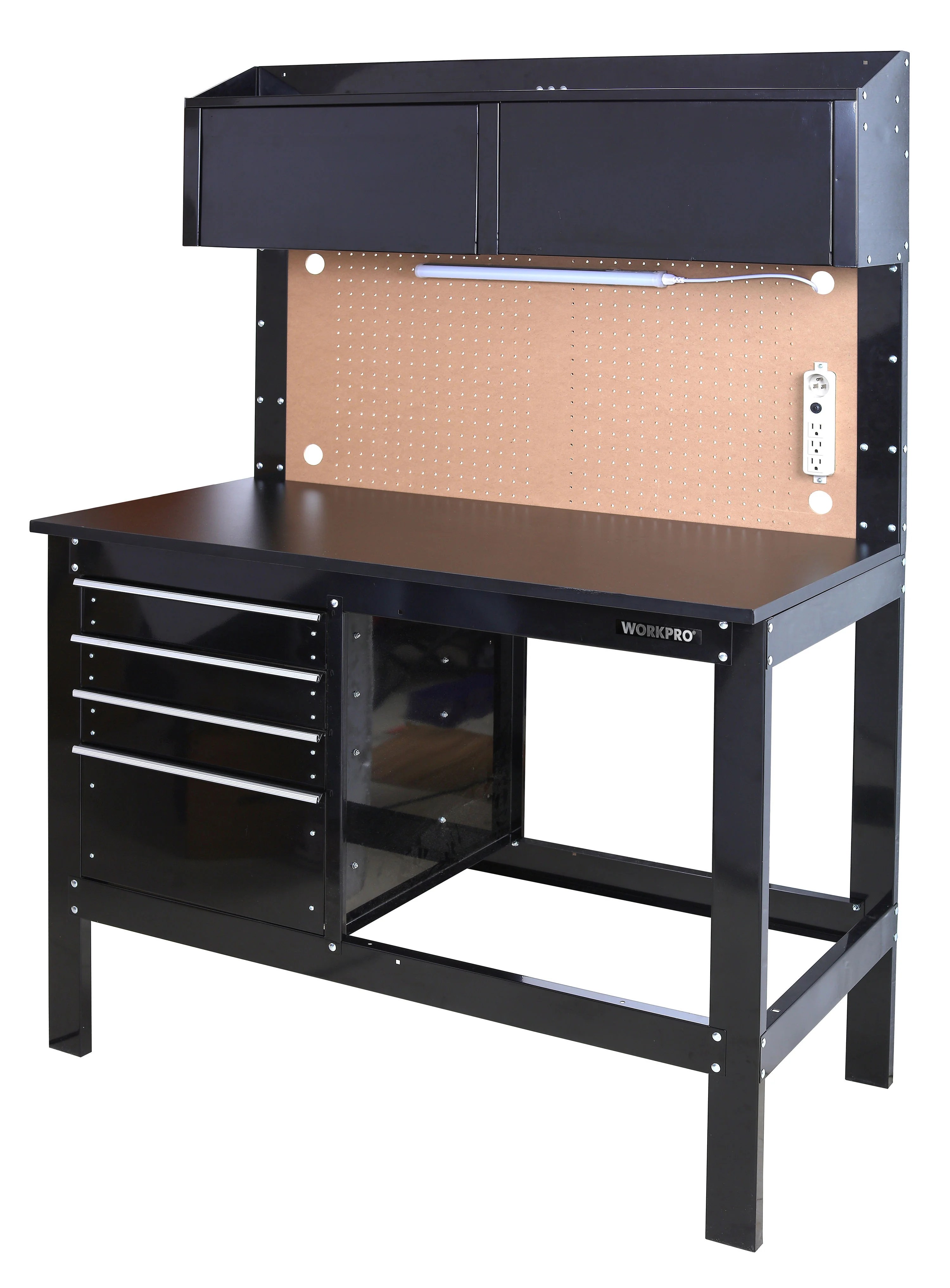132+ Workbench With Built-In Dust Collection
 javdna06.blogspot.com
javdna06.blogspot.com Opening: A Cleaner Workshop is a More Productive Workshop Tired of sawdust coating every surface in your workshop? This guide walks you through building a sturdy and functional workbench with integrated dust collection, turning your workspace into a haven of efficiency. Get ready to say goodbye to messy cleanup and hello to a healthier, more enjoyable crafting experience.
Step 1: Planning and Design Before you start cutting wood, you'll need a plan. Consider the size of your available space and the type of projects you'll be working on. The overall dimensions of the workbench will be crucial. Factor in the size of your dust collector and where you'll position the hose inlets. Sketch out a design, including dimensions, material list, and the location of dust collection ports. Decide on the overall size and height of your workbench. Standard workbench height is typically between 34" and 38". Determine the placement and size of the dust collection ports. Consider multiple ports for versatility. Plan for the dust collection enclosure beneath the workbench. Ensure enough space for your dust collector and easy access for emptying.
Step 2: Gathering Materials and Tools You'll need lumber for the workbench frame, legs, and top. Plywood or MDF is a good choice for the top, while sturdy lumber like 2x4s or 4x6s are suitable for the frame and legs. You'll also need PVC pipe or flexible hose for the dust collection system, along with fittings, clamps, and a dust collector. Lumber (2x4s, 4x4s, Plywood, MDF) PVC pipe or flexible dust collection hose Dust collection fittings (couplers, elbows, blast gates) Screws, bolts, and wood glue Dust collector Measuring tape, saw, drill, screwdriver, sandpaper, safety glasses
Step 3: Building the Workbench Frame Begin by constructing the frame that will support the workbench top. Cut the lumber to the lengths specified in your plan. Assemble the frame using screws and wood glue, ensuring it is square and sturdy. Reinforce the corners with brackets or additional bracing for added stability. Cut the lumber for the frame to the correct lengths. Assemble the frame using screws and wood glue. Ensure the frame is square and level. Add corner braces for extra strength.
Step 4: Attaching the Legs Attach the legs to the workbench frame. Use screws and bolts to create a secure connection. Ensure the legs are plumb and level. Consider adding adjustable feet to compensate for uneven floors. Cut the legs to the desired height. Attach the legs to the frame using screws and bolts. Ensure the legs are plumb and level. Add adjustable feet (optional).
Step 5: Creating the Workbench Top Cut the plywood or MDF to the desired size for the workbench top. Attach it to the frame using screws and glue. Ensure the top is flush with the frame. Consider adding a second layer of plywood for increased durability and thickness. Cut the plywood/MDF to size. Attach the top to the frame using screws and glue. Ensure the top is flush with the frame. Add a second layer for increased durability (optional).
Step 6: Integrating the Dust Collection System This is where you'll install the dust collection ports and connect them to your dust collector. Cut holes in the workbench top for the dust collection ports. Install the ports and connect them to PVC pipe or flexible hose running underneath the workbench. Connect the hose to your dust collector. Install blast gates to control airflow to individual ports. Cut holes in the workbench top for the dust collection ports. Install the dust collection ports. Connect the ports to PVC pipe or flexible hose. Install blast gates to control airflow. Connect the hose to your dust collector.
Step 7: Building the Dust Collection Enclosure (Optional) Consider building an enclosure underneath the workbench to house your dust collector and contain any stray sawdust. This can be a simple box made from plywood or lumber. Ensure the enclosure has adequate ventilation and easy access for emptying the dust collector. Build a box from plywood or lumber. Ensure adequate ventilation. Provide easy access for emptying the dust collector.
Step 8: Finishing Touches Sand the entire workbench to remove any sharp edges or splinters. Apply a finish such as varnish or polyurethane to protect the wood from moisture and wear. Add any additional features you desire, such as drawers, shelves, or a vise. Sand the entire workbench smooth. Apply a protective finish (varnish, polyurethane). Add drawers, shelves, or a vise (optional).
Conclusion: Enjoy a Cleaner, More Efficient Workspace Congratulations! You've successfully built a workbench with integrated dust collection. Now you can enjoy a cleaner, more efficient workspace, free from the hassle of constant cleanup. This workbench will not only improve your productivity but also contribute to a healthier and more enjoyable crafting environment. Remember to regularly empty your dust collector and maintain your system for optimal performance.
Workpro 2-in-1 48in Workbench And Cabinet Combo With Work Light
 www.walmart.com
www.walmart.com Home Depot Workbenches With Drawers
 javdna06.blogspot.com
javdna06.blogspot.com Husky 4 Ft. Solid Wood Top Workbench With Storage-g4801s-us
 www.homedepot.com
www.homedepot.com
0 komentar:
Posting Komentar